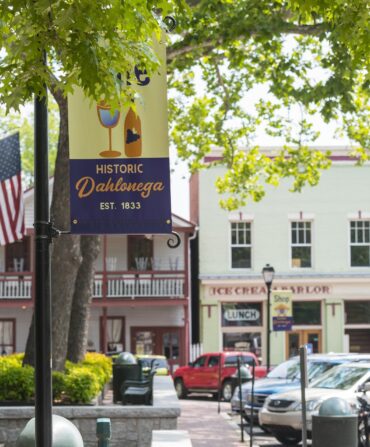According to popular regional legend, the name Shenandoah is derived from a Native American expression meaning “Beautiful Daughter of the Stars.” And if you’ve ever driven through the roughly two-hundred-mile-long valley from Roanoke, Virginia, to Harper’s Ferry, West Virginia, you’ll understand why locals latched on to that particular backstory. Picturesque farms and charm-laden small towns dot rolling green hills bracketed by the Blue Ridge Mountains to the east and the Alleghenies to the west, making Virginia’s Shenandoah Valley one of the prettiest spots in the country—and ripe for a road trip. Interstate 81 cuts through the heart of the region and offers stunning views, but opt for historic Route 11, which runs parallel to 81, to enjoy a more leisurely long-weekend course.
GET STARTED
Begin your trip in Roanoke and head northeast on Route 11 toward Virginia’s Natural Bridge. The rare geological feature, formed by a long-ago cavern collapse, was considered a sacred site by the Monacan tribe. In 1774, Thomas Jefferson purchased the land the limestone arch sits on from King George III. Today, there are six miles of hiking paths, including Cedar Creek Trail, an easy (mostly flat) mile-long walk that follows the stream to Lace Falls, a thirty-foot cascade.
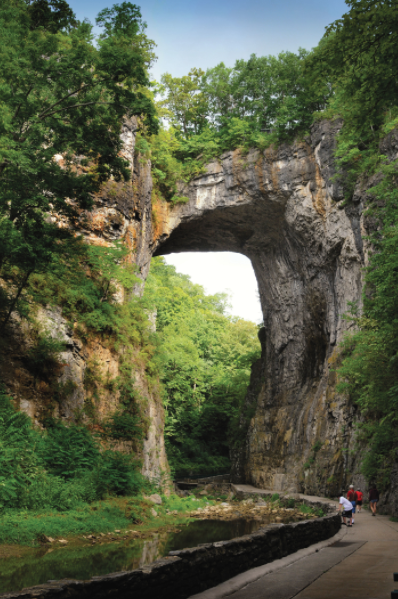
Photo: Courtesy of the Natural Bridge Hotel and Convention Center
Natural Bridge.
LEXINGTON
The first of Shenandoah Valley’s postcard-perfect small towns is just twenty minutes up the road. Anchored by Washington and Lee University and the Virginia Military Institute, Lexington is a vibrant creative hub. Renowned abstract artist Cy Twombly was born and raised in these hills—as was his friend, the internationally acclaimed photographer Sally Mann, who still lives in Lexington with her husband. W&L’s 325-acre campus, which was designated a National Historic Landmark in 1976, is well worth exploring—the historic Colonnade and Lee Chapel are popular stops.

Photo: Courtesy of Visit Shenandoah
Washington and Lee University’s Lee Chapel.
In the heart of downtown Lexington, pop into The Bookery, where you’ll find antique, out-of-print, rare, used, and new titles stacked floor to ceiling with cheaper-than-Amazon price tags. Or browse modern Virginia landscape paintings at Cabell Gallery before grabbing an afternoon beer at Blue Lab Brewing, opened by two W&L professors in 2010. If you’re after a pre-dinner nap, check into The Georges early. The locally-owned boutique hotel occupies two of Lexington’s oldest buildings. Restored in 2014, the historic hotel ditched toiles and doilies in favor of a chicer modern look.
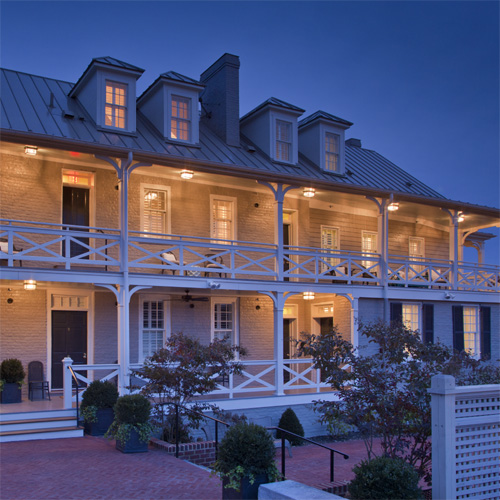
Photo: Courtesy of The Georges
The Georges hotel in Lexington.
After dinner at the Red Hen—one of the early farm-to-table evangelists in Virginia—you’ll find plenty of after-hours diversions between Hull’s Drive-In, the vintage community-owned theater was saved by the town in 2000, and Lime Kiln, an outdoor music venue open May through August. You can also catch live jazz at Haywood’s, the piano bar at The Georges.
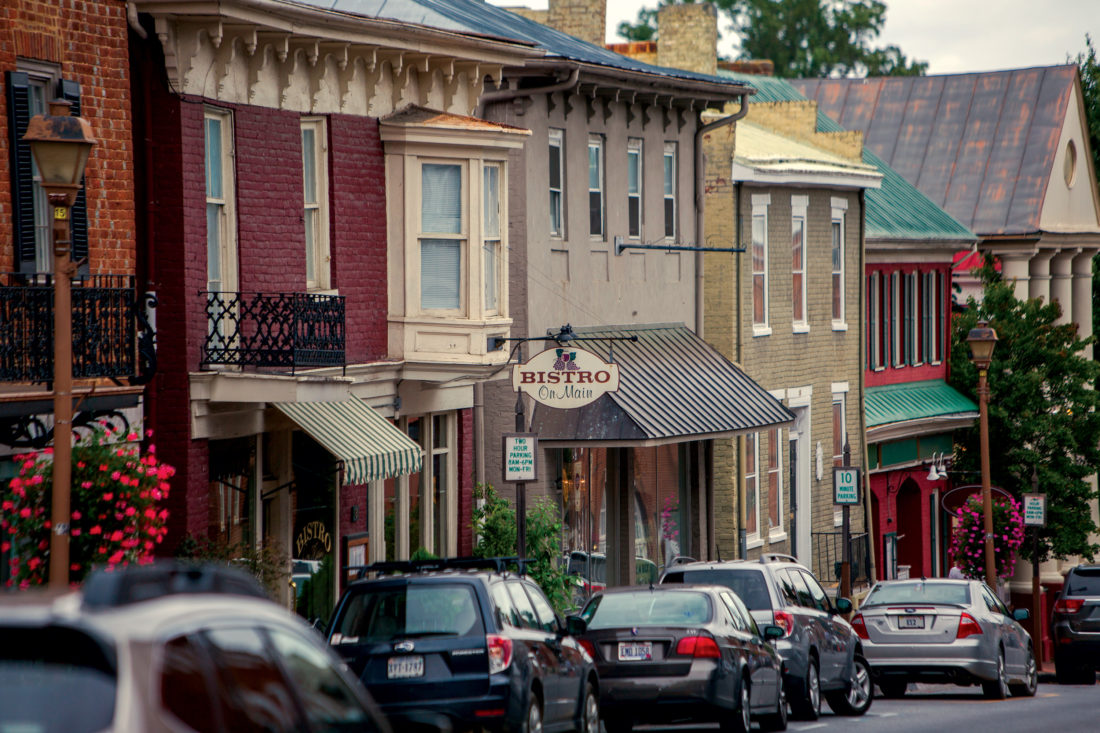
Photo: Courtesy of Visit Shenandoah
Main Street in downtown Lexington.
STAUNTON
Pull on your hiking boots before you leave Lexington and continue northeast on Route 11 toward Staunton. Before heading into downtown Staunton, though, hang a right onto I-64 to Humpback Rocks. Located along the Blue Ridge Parkway between mile markers five and six, the popular hike is relatively short but steep, skipping onto the Appalachian Trail in parts. The panoramic views of the surrounding mountains (spectacular any time of year) are worth every bit of the sweat you’ll work up.
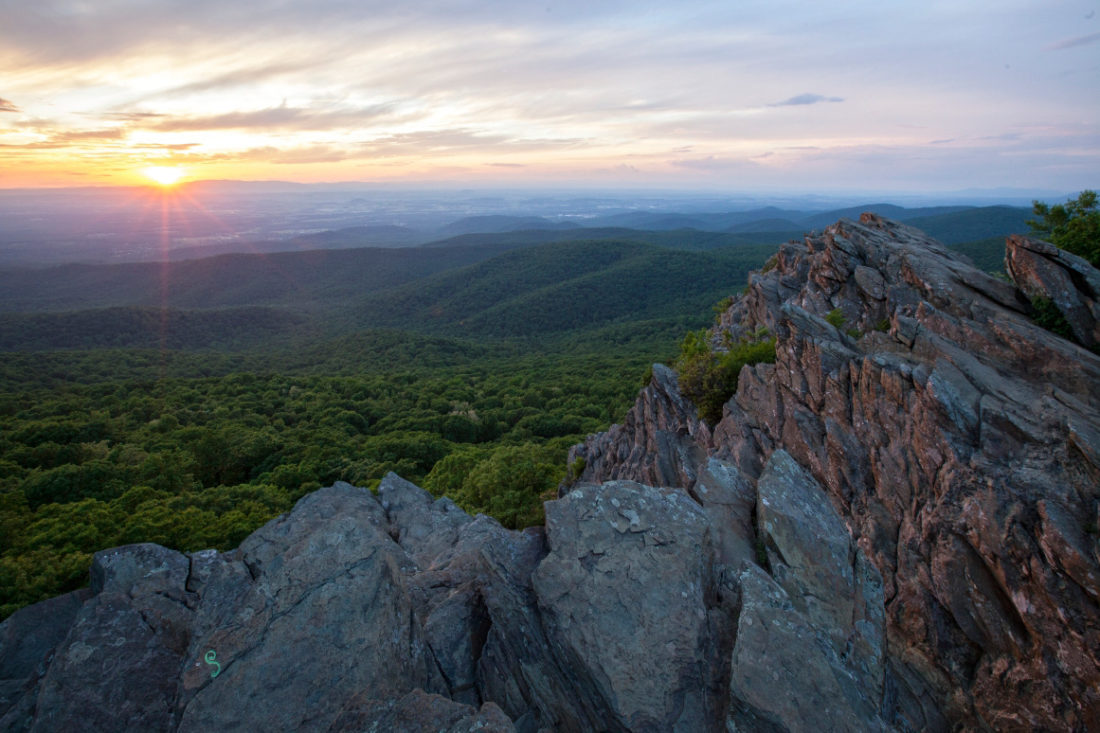
Photo: Courtesy of Virginia.org
The view from Humpback Rocks.
Back on the road, a fortifying lunch is the first order of business. Staunton’s food scene is richer and deeper than most towns its size—that has a lot to do with the region’s farmers. See (or taste) for yourself at “The Store” run by the folks at Nu-Beginnings Farm. Shelves are stocked with fresh fruits and veggies, butter, eggs, meats, and jarred everything. They also run a micro-café (think local egg salad sandwiches and Virginia cheese plates) in the front of the indoor farmers’ market. Check into the circa-1920s Stonewall Jackson Hotel before setting off on foot to explore downtown, celebrated for its nineteenth century architecture. One man, architect T.J. Collins, is largely responsible for Staunton’s classic good looks. He designed or remodeled more than two hundred buildings around town.
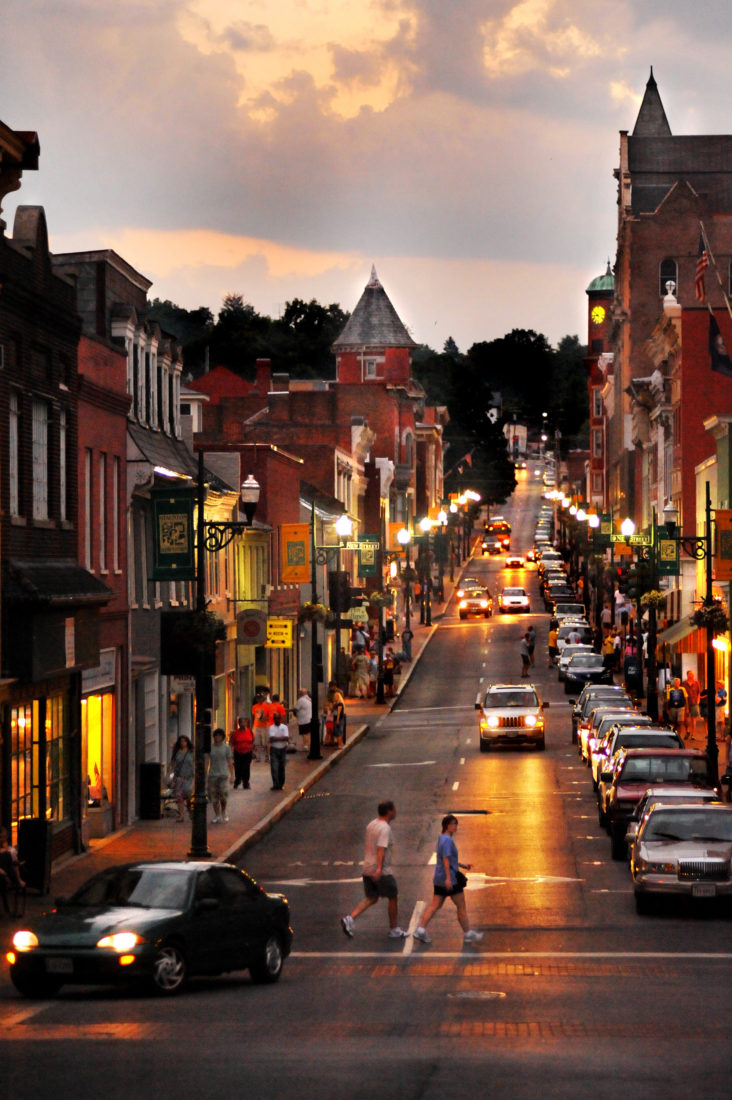
Photo: Woods Pierce
Downtown Staunton.
Sit down to and early dinner at distinguished chef Ian Boden’s twenty-six seat restaurant, The Shack. On weekends, Boden offers a sophisticated three (or four)-course prix fixe menu. Downtown’s Zynodoa is another Staunton standout. After dinner, you’ve got a date with the Bard at Blackfriars Playhouse. Run by the American Shakespeare Center, it is the world’s only re-creation of the famous playwright’s original indoor theater.
LURAY / SKYLINE DRIVE
After breakfast at Cranberry’s Grocery & Eatery in Staunton, head toward Luray Caverns, located a little over an hour up Route 11 and then east down Highway 211. Deep beneath the Blue Ridge mountains, the Luray cave system features palatial rooms that soar to ten-story heights in places. Dream Lake creates a disorienting, near perfect reflection of the stalactites above.
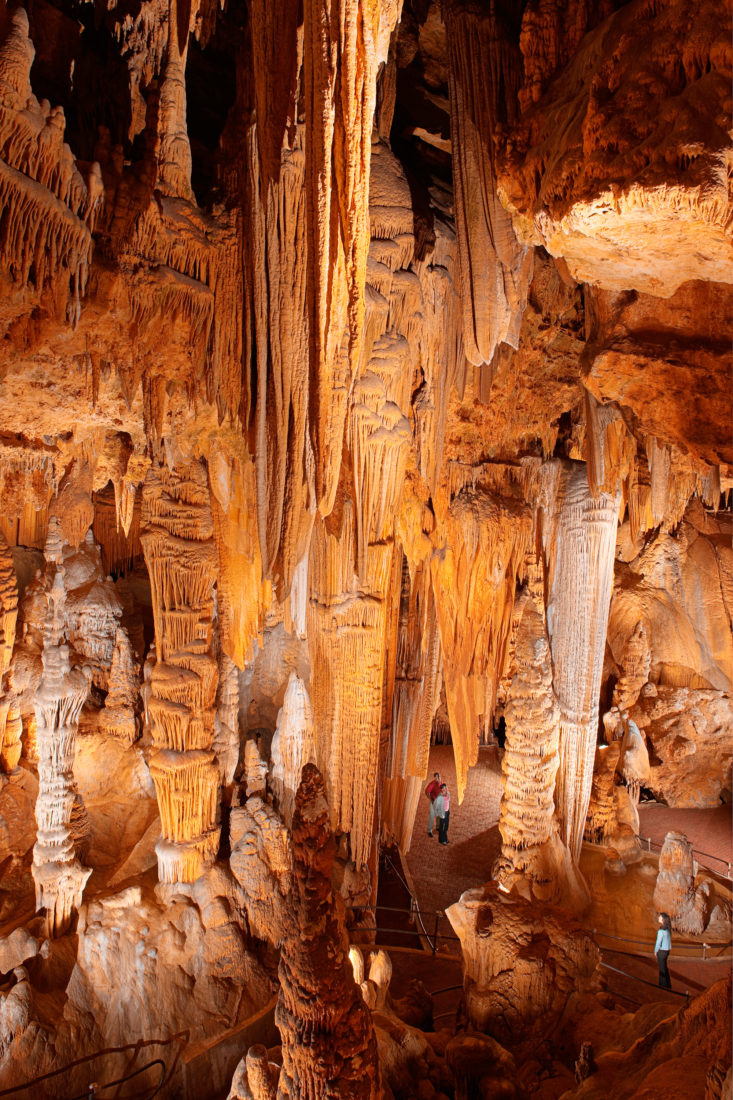
Photo: Bill Huffman
Luray Caverns.
From the caves, you’re just a ten-minute drive to the Central Entrance of Skyline Drive, which runs along the thin spine of the Blue Ridge with unmatched views of the surrounding mountains and the valley below. Hang a left to drive the last third of the fabled roadway or go right to wind your way back south to Roanoke, which at the 35-mph speed limit (and seasonal traffic) can take as long as four hours, though it’s perfectly understandable if you go a little slower to soak up all the Shenandoah’s beauty.



